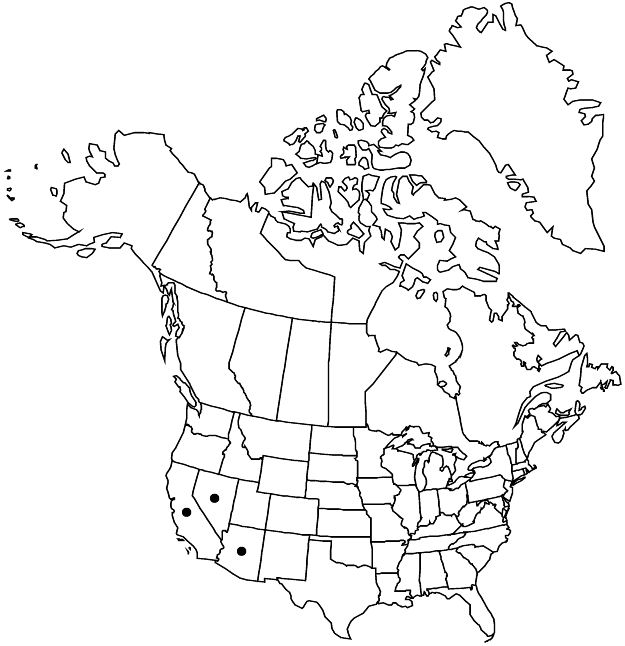Difference between revisions of "Viola purpurea var. mohavensis"
Mentzelia 1: 8. 1976.
FNA>Volume Importer |
imported>Volume Importer |
||
| (One intermediate revision by the same user not shown) | |||
| Line 61: | Line 61: | ||
|publication year=1976 | |publication year=1976 | ||
|special status=Endemic | |special status=Endemic | ||
| − | |source xml=https:// | + | |source xml=https://bitbucket.org/aafc-mbb/fna-data-curation/src/2e0870ddd59836b60bcf96646a41e87ea5a5943a/coarse_grained_fna_xml/V6/V6_270.xml |
|genus=Viola | |genus=Viola | ||
|species=Viola purpurea | |species=Viola purpurea | ||
Latest revision as of 22:20, 5 November 2020
Plants 5–24 cm. Stems spreading to erect, usually not buried, usually elongated by end of season, ± glabrous or usually puberulent. Leaves: basal: 1–5; petiole 4.5–14.5 cm, puberulent; blade gray-green to purple-tinted abaxially, green or gray-green adaxially, ovate, ± orbiculate, or ± deltate, 1–4 × 1–3.5 cm, base usually attenuate, margins dentate-serrate with 4 or 5(6) pointed or rounded teeth per side, apex obtuse, abaxial surface glabrous or puberulent, adaxial surface glabrous or finely puberulent, not shiny; cauline: petiole 0.8–11 cm, glabrous or puberulent; blade ovate, elliptic, or lanceolate, 1.5–3.7 × 0.5–2.5 cm, length 1–3 times width, base attenuate, margins with 3 or 4(5) pointed or rounded teeth per side, apex acute, abaxial surface puberulent, adaxial surface usually glabrous, sometimes puberulent. Peduncles 1.7–14 cm, glabrous or usually puberulent. Lowest petal 10–14 mm. Capsules 5–7 mm. Seeds light brown, 2.7–3.1 mm.
Phenology: Flowering Mar–Jul.
Habitat: Desert scrub, sagebrush, dry areas in yellow pine forests
Elevation: 900–2600 m
Distribution

Ariz., Calif., Nev.
Discussion
Variety mohavensis is variable; cauline leaf margins in some populations are similar to basal blades. The basal leaves of plants from Long Valley, Mono County, California, are more or less truncate or subcordate. In 1953, M. S. Baker changed his previous position and decided to treat Viola aurea as a separate species rather than as a subspecies of V. purpurea, and to treat mohavensis as a subspecies of V. aurea. G. L. Stebbins et al. (1963) stated that additional study may reveal that aurea and mohavensis might be better treated as species separate from each other and from V. purpurea.
M. S. Baker (1953) noted that a form of var. mohavensis found in Mono and Inyo counties, California, is much greener in aspect and lacks microscopic pubescence. G. L. Stebbins et al. (1963) wrote that these taxa appeared to be a variable assemblage perhaps of forms transitional between V. aurea and subspecies of V. purpurea other than subsp. purpurea.
Selected References
None.